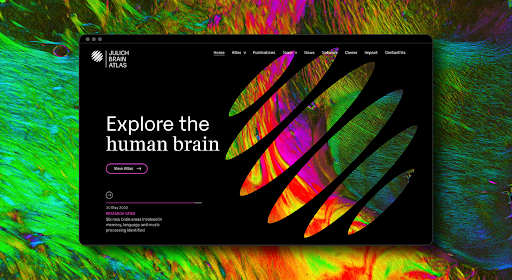Featured Project
Julich Brain Atlas

New website launched presenting the Julich Brain Atlas
The new Julich Brain Atlas website has been launched in July 2022. The page presents the concept and research behind the human brain atlas developed by teams at the Institute of Neuroscience Medicine (INM-1) at Forschungszentrum Jülich and the Cécile and Oscar Vogt Institute for Brain Research in Düsseldorf.
The Julich Brain Atlas is the result of more than a quarter of a century of research and has become a modern-day reference of the brain for the neuroimaging community. The atlas contains cytoarchitectonic maps of the human brain in high resolution and comprises maps of more brain areas than ever identified before. It shows the brain’s cellular architecture in a three-dimensional space and reflects variability between individual brains. Various neuroscientific data from different levels can be systematically integrated and analyzed in the atlas – a kind of Google Earth for the brain. Embedded in the EBRAINS siibra atlas viewer it provides the link between ultra-high resolution, single subject BigBrain and the probabilistic Julich Brain Atlas resulting from multiple subjects.
“With the Julich Brain Atlas, we want to provide a tool for scientists around the world to better understand the brain and enable clinicians to plan medical intervention more precisely,” says Katrin Amunts, head of the Julich Brain Atlas and Director of the C. and O. Vogt Institute of Brain Research and the Institute of Neuroscience and Medicine at Forschungszentrum Jülich.
The new website provides deeper insights into the work that has gone into building the Julich Brain Atlas and the different types of data it comprises – from cytoarchitectonic maps over neurotransmitter receptor densities to fibre architecture. The data of the atlas is made openly available to the scientific community via the Human Brain Project’s research infrastructure EBRAINS.